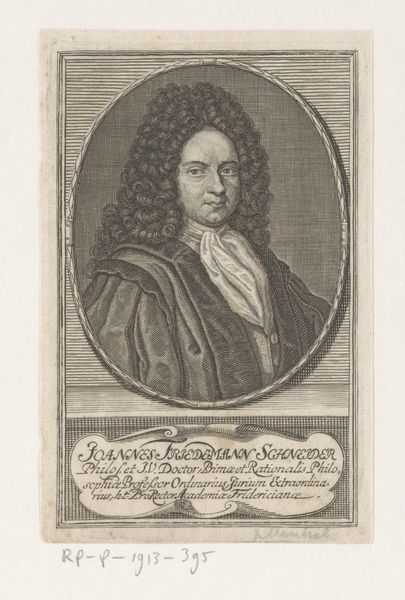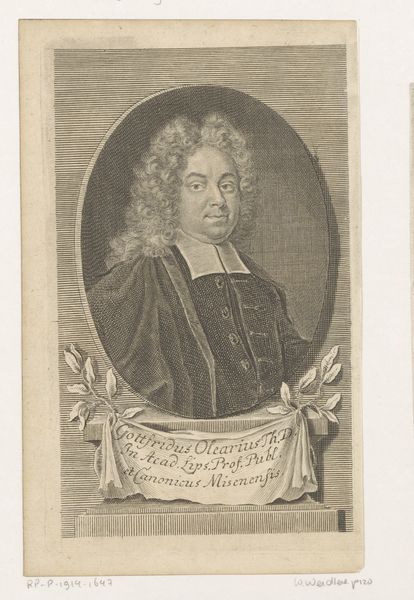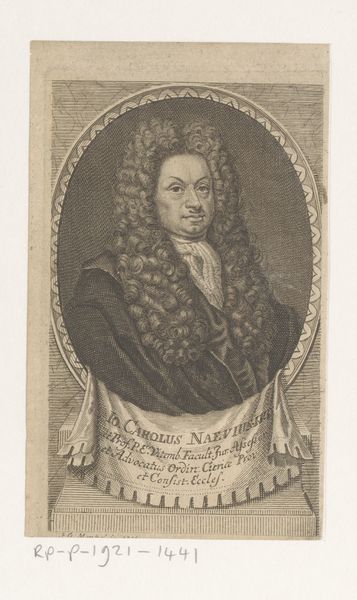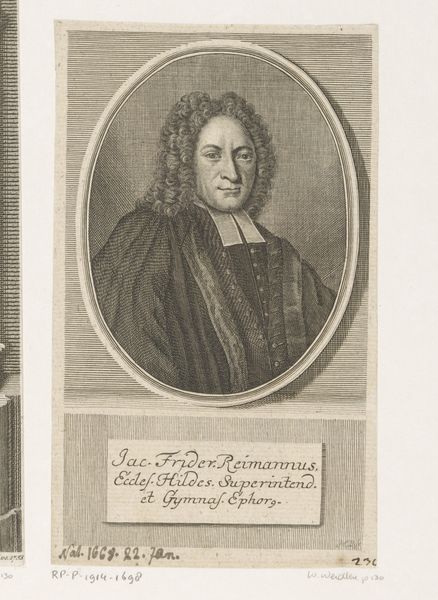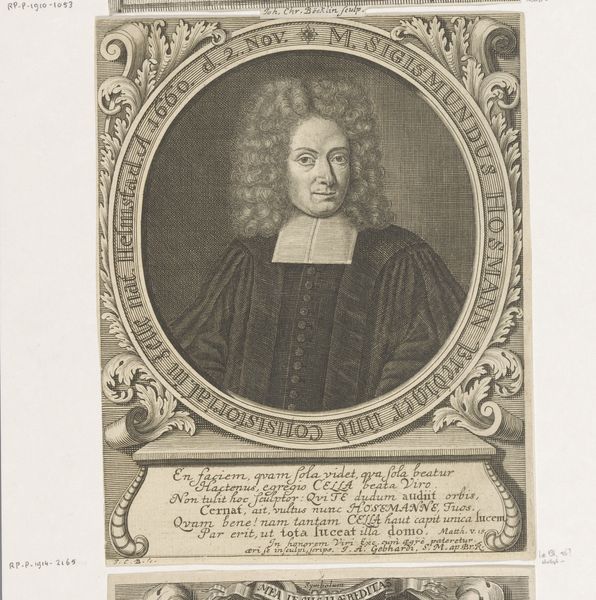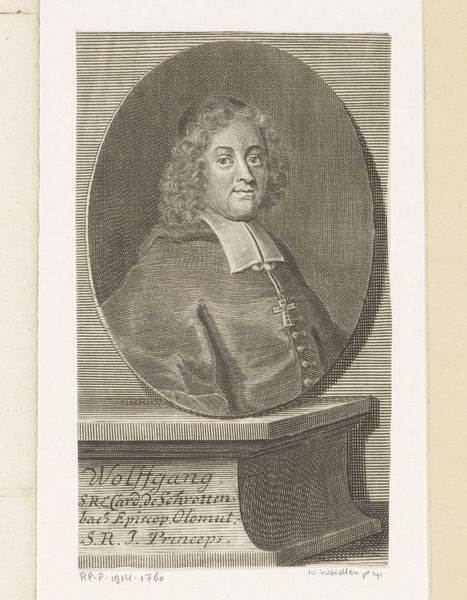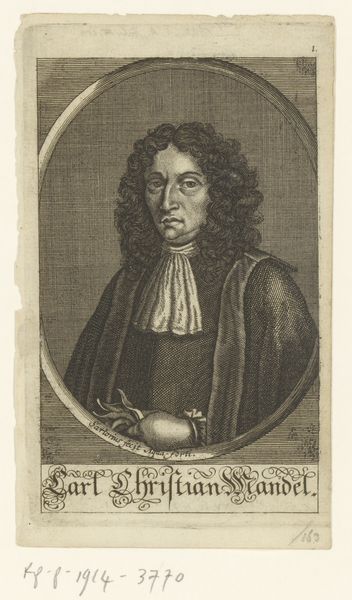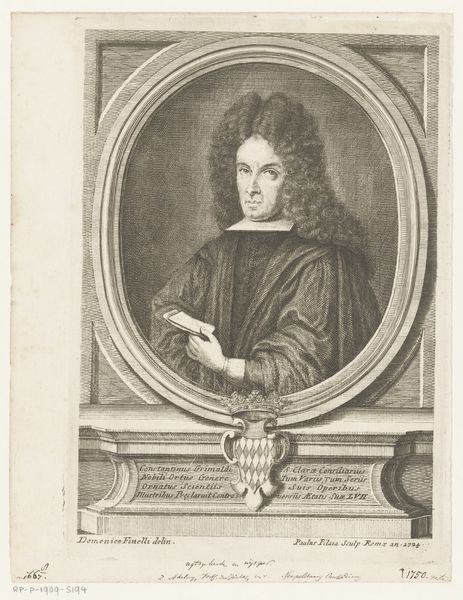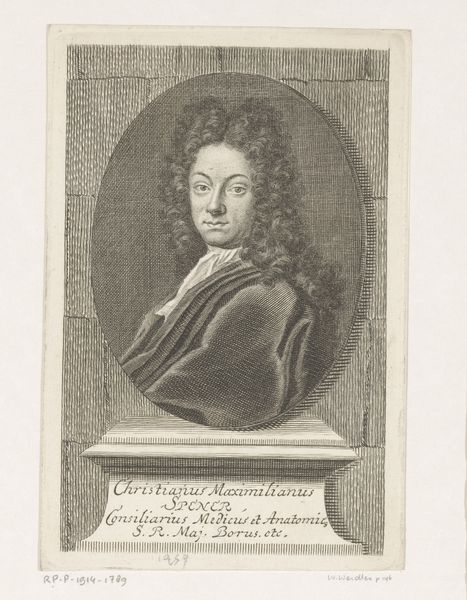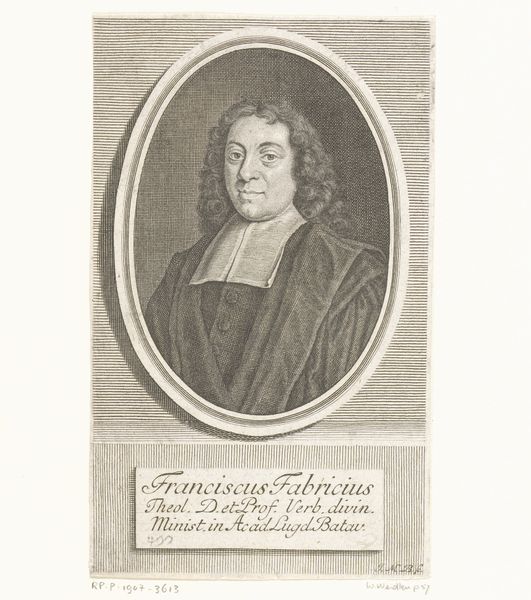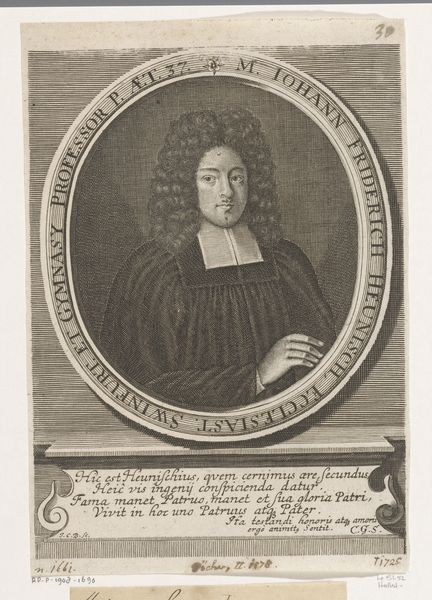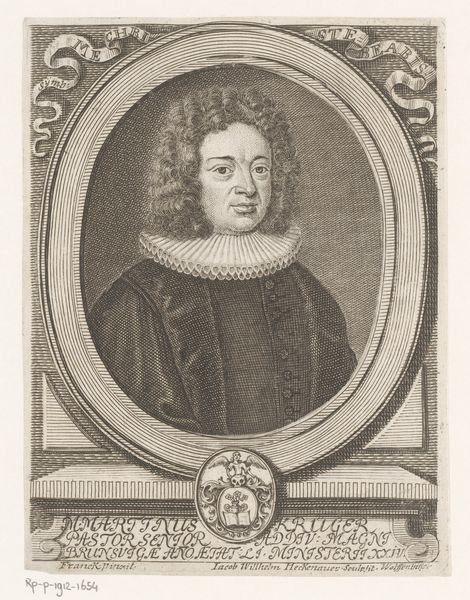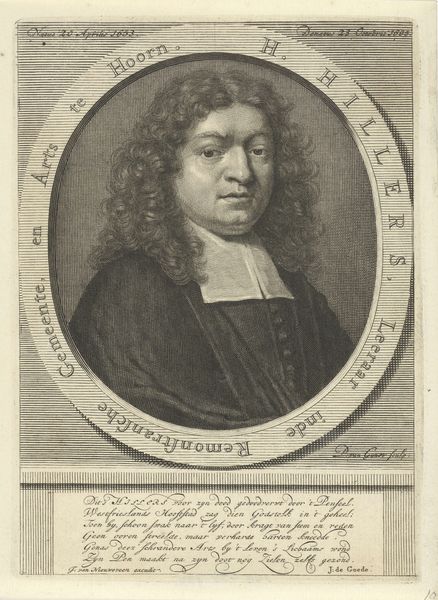
print, engraving
#
portrait
#
baroque
# print
#
old engraving style
#
history-painting
#
engraving
Dimensions: height 152 mm, width 85 mm
Copyright: Rijks Museum: Open Domain
This engraving of Michael Wiedemann was made by Johann Georg Mentzel in the 18th century. It offers a fascinating insight into the cultural and religious context of its time. The visual codes are rich with symbolism. Wiedemann is framed within an oval, a shape often associated with intellect and importance. The inscriptions surrounding him, along with symbolic imagery of milk, manna, and pasture, likely reflect his role as a spiritual leader, offering nourishment and guidance to his flock. Made in Germany, the print reflects the religious fervor of the period following the Reformation. The use of symbolic imagery drawn from the Bible speaks to the centrality of religious belief in everyday life. By examining parish records, religious tracts, and institutional archives, a historian can piece together the social networks and power structures that shaped the production and reception of this portrait. The meaning of art, after all, is contingent on its time.
Comments
No comments
Be the first to comment and join the conversation on the ultimate creative platform.
